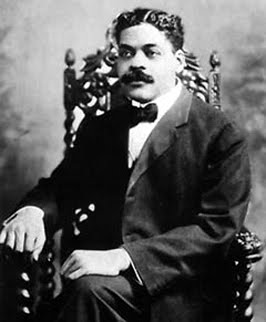Latinos – Who are they?
By Juan Alvarado
In this article, I will try to explain some questions on identity and culture and possibly how to best approach Hispanics (for dawa). You might think that it is strange for someone to write about this. I know my neighbor-he’s the nice Mexican fellow that lives down the street. Or, maybe you are “in the market” to marry a Latino Muslim. Do you really know who they (or we) are? In addition to the above, I also want to clear up some of the confusion as to who is Latino and what constitutes the Hispanic identity.
As a Hispanic Muslim, I get many marriage requests for other Hispanic Muslims from non-Hispanic Muslims. It is actually amazing the number of requests I see and get. From these requests, I gauge that these people are looking for something in particular. Maybe they are looking for someone that looks like Jennifer Lopez or Ricky Martin. I don’t know. The thing is that there is no “typical” Latino/a. Some of the things I’d like to touch on are politics, beliefs, race and ethnicity. Whenever possible, I’ve tried to illustrate the point with pictures. Talking about race and ethnicity can be a touchy subject, though. I would like to submit my apologies in advance if I offend anyone as this is not my intention.
So, who are we? Better yet, what’s in a name? Hispanic or Latino? There are a host of names and categories for what most people refer to as Hispanics or Latinos. Some of these are colloquial. Some are offensive. I will try to stick with some of the better known (non-offensive) ones. Among them are Latin American, Spanish, Latin, and of course Hispanic and Latino among others.
The term ‘Hispanic’ derives from the Spanish term “hispano” which in turn has its origins in the name of the Roman province of Hispania which later became Spain. In the United States, it has come to describe the culture and the people of Spanish-speaking countries. Hispanic is not the term that can be used to describe the people of Brazil and Portugal, though. Though rarely heard, they should be correctly described as “Lusitanic” from the Roman province of Lusitania (which was part of Hispania and later became Portugal). They are, however, included in the nomenclature of Latino. The term “Latino” most likely comes from the Spanish word for Latin American, “latinoamericano.” This is also likely the source of the term “Latin” as well. Some people use the term ‘Spanish’ to describe Latin Americans. This, however, is incorrect. Although, they may speak Spanish, they are not “Spanish.” It would be like describing someone that speaks English as English (which might be correct if you refer to someone from the UK). To say someone is Spanish is to say that they are from Spain. Also, it is the name of the language.
In the United States, the term Hispanic came to prominence in the 1970s as a way to describe people of Latin American descent regardless of race. You may have noticed this in the recent census. There was a separate category for the ethnicity of Hispanics outside of race. The term was mostly a result of the US Senator Joseph Montoya of New Mexico who wanted a label for people of Latin American descent and Spanish-speaking populations for the US Census. The term is an Anglicized form of the Spanish word “hispano” which many Latin Americans called (and call) themselves at the time. The terms Hispanic and Latino are used interchangeably in the United States, however.
Most Hispanics, however, prefer to refer to themselves not as ‘Hispanic’ or ‘Latino’ but rather according to their national backgrounds. Example, people from Puerto Rico will call themselves “puertoriqueños” or Puerto Ricans and people from Peru will call themselves “peruanos” or Peruvians and so forth. Among the people that can claim to be Hispanics are people from the following places: Spain (including Ceuta, Melilla, and the Canary Islands), Equatorial Guinea (in Africa), Argentina, Bolivia, Chile, Colombia, Costa Rica, Cuba, Dominican Republic, Ecuador, El Salvador, Guatemala, Honduras, Mexico, Nicaragua, Panama, Paraguay, Peru, Puerto Rico, Uruguay, Venezuela, as well as the Hispanics in the United States. Additionally, the people of Latin America (i.e., “Latinos”) can also include people from Brazil, Haiti, Guadeloupe, Martinique and French Guiana.
The Language
The language that Latin Americans and their descendants as a whole speak are Spanish, French, Portuguese, English, various creoles and Native American languages as well as the languages of those countries where they have chosen to migrate to and reside. The language that Hispanics speak as cultural inheritors of Spain is Spanish (as well as some of the above mentioned languages). Spanish is both referred to as Spanish (español) and Castilian (castellano). The language or languages that a Latino person may speak depends in large part on who you speak to and where they are from. Some Hispanics do not even speak Spanish anymore because they are descendants of immigrants. You can see this phenomenon in the United States and France among other places. Others could be bilingual or monolingual in the language/s that predominates where they are from (usually Spanish). Do not assume, however, that they all speak Spanish. Some people may only speak indigenous languages from the areas they are from, for example. Even if you know some Spanish, though, do not assume that you will be able to communicate effectively either since there are many regional varieties of Spanish.
Race and Ethnicity
To begin with, there is no Hispanic race. Latin America abounds with people from very diverse backgrounds. The following montage will give you an example of famous and not so famous people of Latin America that happen to be of many different races and ethnicities.
African influence
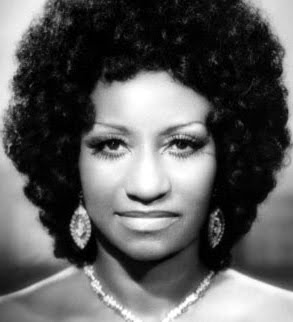
Celia Cruz (October 21, 1925 – July 16, 2003) was a Cuban-American salsa singer who spent most of her career living in New Jersey. She primarily worked in the United States and several Latin American countries. Celia Cruz was one of the most successful Cuban performers of the 20th century. She achieved twenty-three gold albums to her name and earned the nickname “La guarachera de Cuba” (The Salsa singer of Cuba). Leila Cobo of Billboard Magazine once said “Cruz is indisputably the best known and most influential female figure in the history of Cuban music.” She is best known for her exclamation “¡azucar!” (sugar).
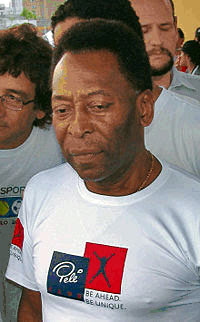
Edson Arantes do Nascimento (born October 23, 1940 in Três Corações, Brazil), best known by his nickname Pelé, is a former Brazilian soccer (football) player. He is rated by many as the greatest footballer of all time. In the 20th century, he was given the title of “Athlete of the Century” by the International Olympic Committee and jointly received FIFA Player of the Century award chosen by officials at the organization, which he shared with Diego Maradona. In his native Brazil, Pelé is hailed as a national hero. He is known for his accomplishments and contribution to the game. He was officially declared the football ambassador of the world by FIFA and a national treasure by the Brazilian government. He is also acknowledged for his vocal support of policies to improve the social conditions of the poor (he dedicated his 1,000th goal to the poor children of Brazil). During his career, he was called “The King of Football” (O Rei do Futebol), “The King Pelé” (O Rei Pelé) or simply “The King” (O Rei). He is also a member of the American National Soccer Hall of Fame.
Asian influence
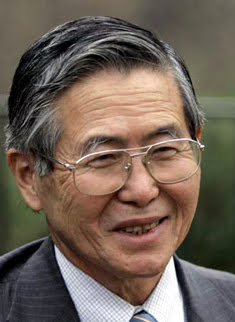
Alberto Ken’ya Fujimori (born in Lima, Peru on July 28, 1938) is a Peruvian politician of Japanese descent (he also has Japanese citizenship). He served as President of Peru from July 28, 1990 to November 17, 2000. Fujimori is a controversial figure. He was credited with uprooting terrorism in Peru and restoring the economy, though his methods have drawn charges of authoritarianism. He is alleged to be accountable for a number of human rights abuses during his presidency, for which he is currently facing trial.

Bruce Kastulo Chen (born June 19, 1977 in Panama City, Panama) is a pitcher for Major League Baseball who is currently signed with the Kansas City Royals. He attended Institute of Panama and studied civil engineering during the baseball off-season at Georgia Tech. He is from the little-known ethnic Chinese community in Latin America. His paternal grandfather, Kuen Chin Chan Lee, joined his brothers and other relatives in Panama when he was 9. Bruce’s maternal grandmother, Kuen Yin Liu de Laffo, was actually born in Panama but her family returned to China after a fire destroyed their home. After years of hard labor, she was able to return to Panama at age 24. Both of Bruce’s grandparents have died, but he hopes to reconnect with his Chinese roots someday. Chen has previously played for the Baltimore Orioles, Houston Astros, Boston Red Sox, Cincinnati Reds, Montreal Expos, New York Mets, Philadelphia Phillies, Atlanta Braves, among others.
Native influence

Rigoberta Menchú Tum (born January 9, 1959 in Chimel, Quiché, Guatemala) is an indigenous Guatemalan, of the Quiché-Maya ethnic group. Menchú dedicated her life to publicizing the plight of Guatemala’s indigenous peoples during and after the Guatemalan Civil War (1960-1996), and to promoting indigenous rights in the country. She was the recipient of the 1992 Nobel Peace Prize and Prince of Asturias Award in 1998. Menchú is a UNESCO Goodwill Ambassador. She is the subject of the testimonial biography I, Rigoberta Menchú (1983) and the author of the autobiographical work, Crossing Borders.
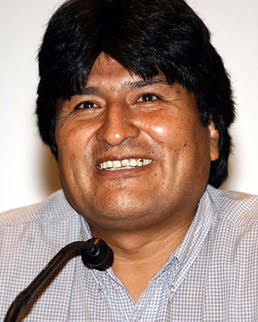
Juan Evo Morales Ayma (born October 26, 1959 in Orinoca, Oruro Bolivia) is the President of Bolivia. He is popularly known as Evo and has been declared the country’s first fully indigenous head of state since the Spanish Conquest over 470 years ago. This claim has created controversy, though, due to the number of mestizo presidents who came before him. Morales is the leader of Bolivia’s cocalero movement – a loose federation of coca leaf-growing campesinos (farmers) who are resisting the efforts of the United States to eradicate coca in the province of Chapare in central Bolivia. Morales is also leader of the Movement for Socialism political party (Movimiento al Socialismo,with the Spanish acronym MAS meaning “more”).
Middle Eastern influence

Salma Hayek Jiménez (born September 2, 1966) is an Academy Award, Golden Globe, and Emmy-nominated Mexican-American actress. She is also a Daytime Emmy-winning director and an Emmy-nominated TV and film producer. Hayek has appeared in more than thirty films and performed as an actress outside of Hollywood in Mexico and Spain. Hayek’s charitable work includes increasing awareness on violence against women and discrimination against immigrants. Hayek was born in Coatzacoalcos, Veracruz, Mexico. She is the daughter of Diana Jiménez, an opera singer and talent scout, and Sami Hayek, an oil company executive. Hayek’s father is of Lebanese descent and her mother is of Spanish descent.

Shakira Isabel Mebarak Ripoll (born February 2, 1977), known simply as Shakira (Arabic: شاکیرا), is a Colombian contralto singer, songwriter, instrumentalist, record producer, dancer, philanthropist and occasional actress who has been a major figure in the pop music scene of Latin America since the mid-1990s. In 2001, she broke through into the English-speaking world with the release of Laundry Service, which sold over fifteen million copies worldwide. A two-time Grammy Award-winning, seven-time Latin Grammy Award-winning and fifteen-time BMI award-winning artist, Shakira is the highest-selling Colombian artist of all time, having sold more than 50 million albums worldwide according to BMI. She is also the only artist from South America to reach the number-one spot on the Billboard Hot 100, the Australian ARIA chart, the United World Chart and the UK Singles Chart. Shakira was born on February 2, 1977 in Barranquilla, Colombia. She is the only child of Nidya del Carmen Ripoll Torrado, a Colombian of Spanish and Italian ancestry, and William Mebarak Chadid, of Lebanese descent.
European influence
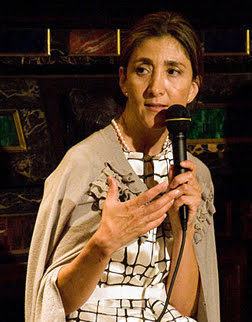
Íngrid Betancourt Pulecio (born December 25, 1961, Bogotá, Colombia) is a Colombian politician, former senator and anti-corruption activist. Betancourt was kidnapped by the FARC, a Colombian guerilla organization, on February 23, 2002 while campaigning for the presidency. She had decided to campaign in an area of high guerrilla presence and ignored warnings from the government, police and military not to do so. She was dramatically rescued from the FARC guerrilla group along with other hostages. She was considered a key hostage for a possible humanitarian exchange of prisoners for hostages with the government of Colombia. Besides Colombia, her kidnapping has received wide coverage in France due to her French nationality.

Verónica Castro (born October 19, 1952 in Mexico City) is a Mexican actress, singer and host. She is the mother of singer Cristian Castro and Michell Castro and the sister of telenovela producer José Alberto Castro. She started her career as a television actress. This is where she met Manuel “El Loco” Valdez, father of her son Cristian. She is best known for starring in fotonovelas and telenovelas.
Mixed heritage – los mestizos & los mulatos
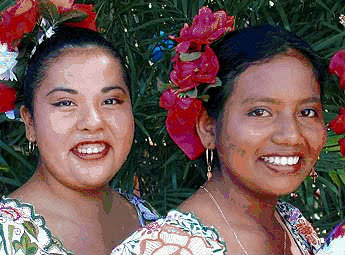
Northern Belize is home to the largest mestizo population in Belize. The term “mestizo” refers to individuals of mixed Spanish (European) and Native (Indigenous) descent. In Belize, where these two young ladies are from, a mestizo refers to a person of mixed Spanish and Yucatan Mayan descent whose primary language is Spanish and religion Catholic. Because of the large mestizo population within Orange Walk and Corozal, northern Belize demographically resembles Mexico’s Yucatan Peninsula more than any Belizean region.
Mulatto (from Portuguese or Spanish mulato and possibly from the Arabic muladi) is a person who has both black African and white European ancestry. It can also be used as an adjective to describe something as a light brown color. This word is regarded as pejorative or even offensive by most English speakers but this is not the case in Spanish. It has been used since slave times to define a person of mixed heritage. Mulattos represent a significant portion of various countries in Latin America. A sample of their percentages follows: Belize (approx. 24.9%), Dominican Republic (approx. 73%), Brazil (approx. 38.5%), Cuba (approx. 24.86%), Colombia (approx. 14%), Puerto Rico (approx. 4.4%), and Haiti (approx. 5%). The roughly 200,000 Africans brought to Mexico were for the most part absorbed by the mestizo populations of mixed European and Amerindian descent. The state of Guerrero once had a large population of African slaves. Other Mexican states inhabited by people with some African ancestry, along with other ancestries, include Oaxaca, Veracruz, and Yucatan.
*Percentages based on the 2010 CIA World Factbook
Assimilation
Some Hispanics may have assimilated.

Cameron Diaz was born in San Diego, California to Emilio Diaz and Billie (née Early). Diaz’s father is a second-generation Cuban-American and her mother is Anglo-German. On one occasion when Diaz was asked if she can speak Spanish, she responded saying: “I know what you’re saying, I really do. I just cannot respond to you back in Spanish. I can barely speak English properly. I didn’t grow up in a Cuban or Latin community. I grew up in Southern California on the beach, basically. And I’m third generation. I’m of Cuban descent, but I’m American.”
You may not even know that someone is Hispanic from their name…
Governor Bill Richardson

William Blaine “Bill” Richardson III (born November 15, 1947) was Governor of New Mexico until 2011. He was a candidate for the Democratic Party’s nomination to run for the President of the United States in 2008. He previously served as a U.S. Representative, Ambassador to the United Nations, and as the U.S. Secretary of Energy. He was chairman of the 2004 Democratic National Convention as well as Chairman of the Democratic Governors Association in 2005 and 2006. Richardson has been recognized for negotiating the release of hostages, American servicemen, and political prisoners in North Korea, Iraq, and Cuba. He has been nominated four times for the Nobel Peace Prize. Bill Richardson was born in Pasadena, California to William Blaine Richardson Jr. (1891-1972), a banker who lived and worked in Mexico City for decades, and MarÃa Luisa López-Collada Márquez (born 1914). Just before Richardson was born, his mother was sent to California, where her husband’s sister lived, to give birth because, as Richardson explained, “My father had a complex about not having been born in the United States.” Three of his four grandparents were Mexican, and he identifies himself as Hispanic. Richardson was raised in Mexico City.
Religious Diversity
When most people think of Hispanics, they tend to think of Catholicism. Roman Catholicism is the faith that Spaniards brought with them from Spain to the New World. It continues to be the predominant religion of most Hispanics. There are, however, Protestant minorities among Hispanics. Most Protestant Hispanics belong to Evangelical and Pentecostal churches. There are many that belong to other churches too, though. Besides Christianity, however, Hispanics have a multitude of other religious beliefs. There are Jewish Hispanics as well as Muslim Hispanics (of course). I’ve met Buddhist Latinos and have heard of Bahai Hispanics. Many Latinos follow other esoteric beliefs systems, too, such as Santeria, Spiritism, Santuario, Candomble, Palo Mayombe, Voodoo, Curanderismo as well as many other non-traditional religions. It should come as no surprise that some Latinos are also atheists.
Political Views and Movements
The political views of Latinos can range from the far left to the far right. Communism and socialism hold a strong fascination for many Hispanics. Indeed, I have met many Dominicans whose name is Vladimir and Ivan due to their parents’ admiration of Russians with the same names. In addition to this, though, as can be found in the United States, there are Republican and Democratic Hispanics. Some are anarchists and others are particularly capitalists.
To conclude, Hispanics come from many different countries. They speak many languages and belong to many races and ethnicities. Some are not merely of a particular race but can be mixed.. As cited above, Latinos have diverse opinions regarding politics. Although there are some things that bond them, they are not static. Keeping this in mind, when introducing someone to Islam, it would be beneficial to first find out more about them — where they are from, what do they believe, do they prefer beisbol or futbol, what is their background, and what do they think? Know who you are talking to. In this way, you may be able to more effectively tell them about the beauties of Islam.
